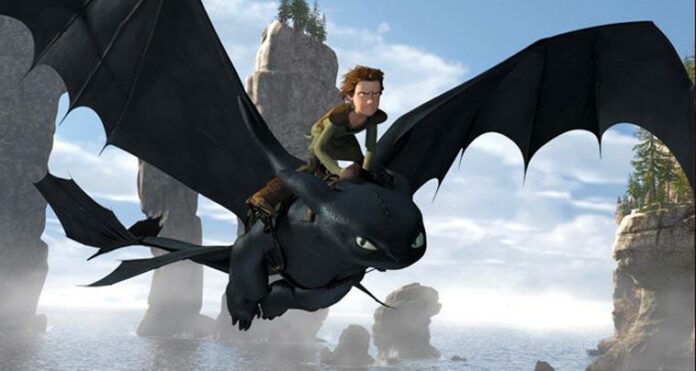Apparently, the Vikings of old used an ancient technique to
teach their children the important art of dragon killing. Unknown
to many of today’s youngsters, and avoided by most adult males,
this technique involved sitting at a table after supper and reading
a book of instructions. That’s right. Reading a book of
instructions.
Dragon killing was an essential survival skill to the Viking
villagers who lived on the remote Island of Berk. This is because a
troop of wild dragons could suddenly swoop down and haul away any
stray sheep, goat, or pet and even, it was rumored, any foolish
human youngster unlucky enough to be caught unprepared.
In Cressida Cowell’s children’s novel, “How to Train Your
Dragon,” the hero of the story is eleven-year-old Hiccup Horrendous
Haddock III, a skinny, accident prone, disappointment to his
father, the tribe’s chieftain, Stoic the Vast. Hiccup is still the
hero in the movie, but his best friend Fishlegs Ingerman has been
given a supporting role, and a plucky female warrior-in-training
named Astrid Hofferson has been added to act as a friend, rival,
and love interest. This is because the Dreamworks studio decided
that teenage Vikings would attract a larger paying audience, and so
Hiccup, Astrid and their classmates are in a “coming of age” movie
instead of the originally planned kiddie comedy.
One of the other differences was to make Toothless (the dragon
Hiccup captures and trains) large enough to fly with the boy on his
back. This change was brilliant. If you liked the 3-D flying
sequence in Avatar, you’ll be blown away with the one in this film.
The difference is one that anyone who enjoyed Saturday morning
cartoons knows already—cartoon characters don’t have to follow the
rules of physics, and the results can be absurdly fun and
astoundingly exhilarating. The scenes with Hiccup and Toothless
soaring through cloud and the Aurora Borealis are awesome in 3-D,
and well worth the hassle of wearing those Elvis Costello style
glasses.
I know I keep mentioning what this movie doesn’t do, but that’s
what makes it great. For example, since the teenagers are voiced by
young actors from films like “Superbad,” and “Cloverfield” and TV
comedies like “Ugly Betty” and “Saturday Night Live,” you might
expect the movie to retreat into pop culture references or even
some “nudge, nudge, wink, wink” kind of humor. But when Hiccup is
handed a horned Viking helmet made from half of his mother’s breast
armor…well, I don’t want to take away the fun.
In another break with tradition, instead of having the
characters resemble the actors who do the talking, the animators
have been allowed to create larger-than-life individuals. For
example, Craig Ferguson (who voices the one handed and one legged
blacksmith Gobber the Belch) doesn’t have biceps the size of tree
trunks, and America Ferrara (who voices Astrid) isn’t a skinny
blonde tomboy. And another great choice is that the dozens of
dragons don’t talk—even though they have their own language in the
book.
As mentioned earlier, Dreamworks changed the direction of this
film and they did so by putting Dean DeBlois and Chris Sanders in
the directors’ chairs. It was a brilliant move, and the creators of
the Disney animated film Lilo and Stitch (an inventive movie about
the importance of Ohana—the Hawaiian word for family) have included
some moral advice here as well:
• Read the instruction manual.
• Teenagers shouldn’t have to slavishly follow traditions
(such as slaying a dragon) to join the tribe.
• Compromise lets both sides win.
• Thinking before you charge into something is a wise (if
decidedly un-Viking) thing to do.
Comments? E-mail
gi*********@co*****.net
.
54.1
F
Healdsburg
November 17, 2024








